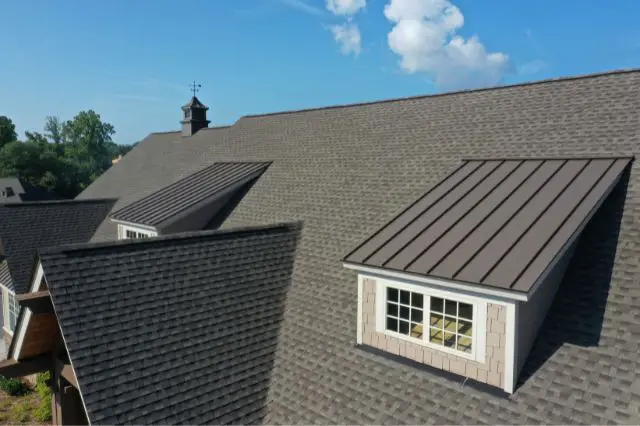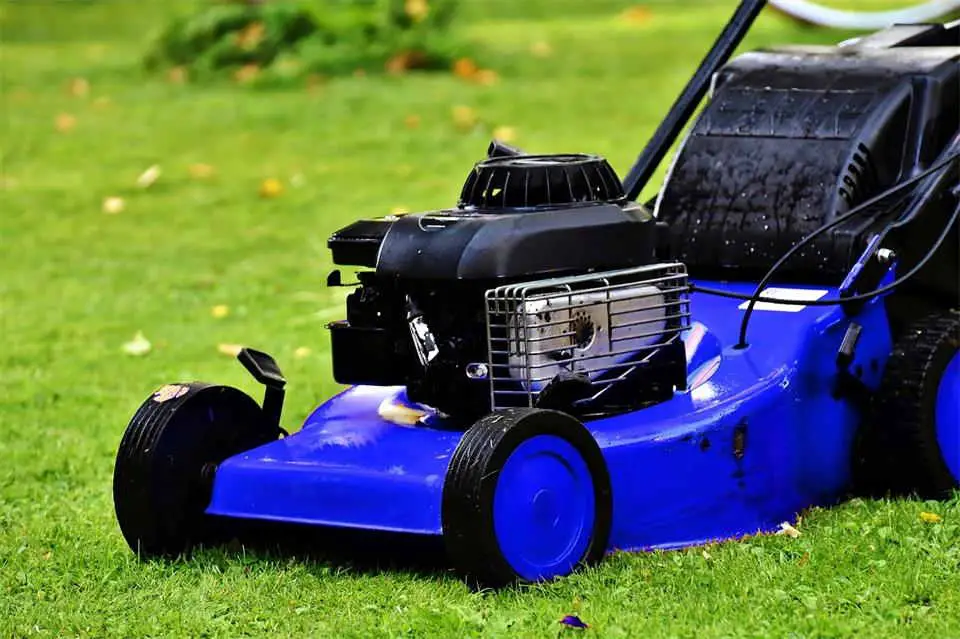Home Improvement
The Most Common Roofing Shingles and Tips for Choosing the Best Ones

There is no doubt that when it comes to your roof, you should give careful consideration to choosing the right type of roofing shingles materials. If a leaky roof or broken roof interrupts your day, you will often spend hours in order to fix the problem. It is best to choose a quality shingle covering to avoid these incidents from occurring. In order for you to find the best type of this specific material, first you are going have look at which factors are important and common in comparison with other types of roofs. After understanding what makes each one different and how they react differently under stressful conditions, it will be easy for you to understand which option is best for your needs. Here are some of the most common roofing shingles, which you need to know about before you go out in search of them.
Asphalt Shingles
The most popular choice for covering roofs, this type of material is most suitable if the roof is mostly exposed to the elements. For instance, when you look at the Technonicol website, you will uncover that, asphalt roofing shingles requires little or no maintenance because they are made from asphalt which makes it highly resistant to the damage caused by hail stones, ice and other weather conditions that can affect the integrity of roofs. It is capable of withstanding strong winds and rain which makes it a good option if your property is located in an area that has severe weather conditions during the winter. Most homeowners prefer this type of material because as long as they are able to maintain it, they are confident that they will have a leak-free roof covering in their home for years to come.
EPDM Rubber Roof Tiles
EPDM rubber is known to be the most popular material used to cover various materials. It can be used in areas that are exposed to extreme temperatures and weather conditions because it does not conduct heat but at the same time it does not easily absorb water. It is highly resistant to pressure and chemicals which makes it suitable for covering roofing systems of all types, including steel roofs, concrete or asphalt. You can find this type of roofing shingle in different colors and designs like ribbed, diamond or stepped patterns which will fit any architectural design that you want to use in your home or business.
Concrete Roof Tiles
This is the most common type of roof tiles used around the world. It comes in different colors and designs that are made either by hand or in a mold, but most of them have a smooth finish as well as holes or grooves that make it suitable to drain water when they get poured with rain or snow. They can be installed over any type of roofing, but they are ideal over concrete roofs because they match the texture and color of the material used for covering these roofs. Sometimes it will be necessary to remove parts of the concrete roofing in order to fit new tiles properly, it helps to know what can go in a concrete roll off container in this case before hiring one for your roof refit, as being able to get rid of the right parts of the roof easily will make the job much less stressful.
Synthetic Slate Roofing Shingles
Synthetic slate roofing shingles are made from fiberglass, which is blended with a cement binder. These shingles come in different shapes and sizes that can be used to cover large areas of your home such as the roof, porch or patio without covering any other materials. The synthetic material used in this type of shingle is lightweight which means that they can be easily transported to the job site without any difficulties. It is highly resistant to heat, moisture and weather conditions including acid rain and salt spray which makes it a suitable choice for use in different parts of your house or building.
Slate Roofs
This is a popular type of roof covering that looks like large sheets of gray stone, but actually it is not. Slate can be used to cover any type of property as long as it is made from natural rock that is suitable for this purpose. The stone does not allow water penetration when it gets wet unlike most types of other roof materials. As for maintenance purposes, this type will require little or no attention until the time comes when its durability diminishes and you need to replace it with a new one.
Metal Roofing Shingles
Made from metal, these shingles function as one of the best and most suitable roof for all purposes. It requires a minimum amount of maintenance which includes cleaning with water and brushing it off occasionally to remove any moss, mold or other dirt that accumulates on its surface. Extreme weather conditions can affect its durability, but at the same time it will last for a long period of time before you need to replace it.
Tips How to Determine the Best Types of Roofing Shingles
When considering how to replace a roof, you will want to take into account the various types of roofing shingles available. The best type of shingle will depend on your specific needs and budget but below are tips for determining what type is best for you.
Curb Appeal
If your only concern is making your house more attractive, then consider choosing an asphalt roof because it is affordable, offers good coverage and has an appearance that ranges from unnoticeable to high-end (with some exceptions). When considering your curb appeal, you’ll want to think about how you want your home to look and feel. You can’t make a strong first impression with a chipped and peeling asphalt roof. You may also want to consider shingles that will help direct the eye from an unattractive wall down to the driveway or sidewalk. The type of shingles you choose will impact their appeal in the way that features are perceived and viewed.
Energy Efficiency
When considering energy-friendly shingles, consider your local climate and weather. For example, if you live in an area where large trees are always present and shed their leaves throughout the year or if you live in a high-wind area, then it would be advantageous to find a type of shingle that can help reduce the amount of heat loss from your home and reduce the amount of air circulation.
Durability
Roofing shingles are rated for durability by the number of square feet covered per bundle, which can range from about 150 to over 300 feet. Typically, the higher the number of square feet, the tougher and longer lasting the shingle will be. For instance, a shingle that is rated for durability covering 200 square feet will be more durable than one covering 150 square feet. This all depends on what type of roof you have and what kind of weather it goes through in any given year.
In addition to square footage, determine whether or not you want a colored or black roofing shingle. Black roofing shingles are less expensive and typically last longer than colored shingles. However, if you choose a colored shingle, your roof will look more visually appealing and be more resistant to fading over time.
Fire Safety Ratings
In addition to durability ratings, most roofing companies also have fire or thermal ratings for the different types of shingles they sell. The rating is in regards to how long it takes before the shingle ignites as a result of direct flame contact – so the faster it burns up the better. You can find this rating on the box that is shipped with your new roof or at the store or website where you purchase them.
Warranty
A 25-year manufacturer’s warranty is typical for roofing shingles; however, some manufacturers may offer longer or shorter warranties depending on their products and the type of material it’s made from. Read the fine print on your warranty before making the final purchase because it can determine whether or not you need to replace your shingles in a few years. It’s also important to consult a contractor before installing new shingles in case you need to replace worn shingles with certain types of roofs that are more difficult to repair.
Roofing shingles are an essential part of the roof. The type of roofing you decide on will determine how long your roof will last and how much money you’ll spend in the future. You need to choose wisely to avoid issues that may arise in the future, such as leaks during heavy rainfall or ice dams affecting your home’s interior. You should also find out what type of homes your neighbors have or ask an expert before making any final decisions.
Home Improvement
Clever Ways to Introduce Zones into Your Open Plan Living Space

Open-plan living spaces have become increasingly popular due to their airy, spacious feel and seamless flow. However, while these expansive layouts are great for socializing and maximizing natural light, they can sometimes lack structure.
The key to making an open-plan space functional and visually appealing is to introduce distinct zones for different activities, such as lounging, dining, and working.
Here are some clever ways to achieve well-defined areas without sacrificing the openness of your home.
Use Area Rugs to Define Spaces
One of the simplest yet most effective ways to introduce zones in an open-plan living area is by using premium modern area rugs. These rugs act as visual anchors, helping to distinguish between different areas within the same room.
For instance, a large, plush rug can set apart the lounge area, while a smaller, sleek design can mark the dining space. When selecting rugs, consider complementing colors and patterns that blend well with your overall decor while still adding personality to each zone.
Incorporate Multi-Functional Furniture
Strategically placed furniture can also help create distinct areas in an open-plan space. Sofas with chaise lounges or sectional designs can subtly separate the living room from the dining area without blocking the flow of the space.
Additionally, bookcases, sideboards, or open shelving units can act as partitions while maintaining an airy feel. Consider using backless shelving units to create a semi-open division that allows light to pass through while still offering clear zoning.
Utilize Different Lighting Styles
Lighting is a powerful tool in defining zones within an open-plan layout. Consider using a variety of lighting fixtures tailored to each area’s function. A statement chandelier or pendant light over the dining table can create a focal point, while floor lamps and table lamps can add warmth to the living area.
For a home office nook, task lighting, such as an adjustable desk lamp, ensures adequate illumination while signaling a shift in purpose.
Play with Color and Materials
A subtle yet effective way to distinguish different areas within an open space is by using varying colors and materials. This can be done through contrasting wall paint, wallpaper, or even textured finishes.
For example, a feature wall behind the dining table can create a designated dining zone, while wooden paneling or a bold paint color can define a reading nook. Similarly, varying flooring materials, such as transitioning from hardwood in the living area to tiles in the kitchen, can naturally demarcate spaces.
Introduce Statement Dividers
Room dividers are a fantastic way to create zones while maintaining flexibility. Instead of traditional walls, opt for modern and stylish dividers like glass partitions, wooden slats, or metal-framed panels. Sheer curtains or folding screens can also add an element of softness and versatility, allowing you to open up or close off spaces as needed.
Arrange Seating Thoughtfully
Seating arrangements play a crucial role in defining different areas within an open-plan home. Positioning sofas and armchairs to face inward toward a central coffee table creates an inviting living space, while aligning dining chairs around a distinct table establishes a separate dining area.
If you have a workspace within the same room, using a dedicated office chair and desk setup will clearly distinguish it from the leisure zones.
Maximize Vertical Space with Hanging Elements
Another clever way to introduce zones without cluttering your space is to use hanging elements such as pendant lights, hanging planters, or ceiling-mounted shelving. Hanging a series of pendant lights above a kitchen island or dining table naturally separates it from the rest of the room.
Similarly, suspending plants in one corner can create a cozy reading nook or relaxation spot.
Introduce Greenery for Natural Separation
Houseplants are not only great for aesthetics and air quality but can also act as natural dividers in an open-plan space. Large potted plants, such as fiddle-leaf figs, snake plants, or tall palms, can create subtle separations while maintaining a fresh and organic feel.
For a more structured approach, consider placing plants on tiered shelves or along room edges to reinforce different zones.
Define Spaces with Raised or Sunken Areas
Architectural elements such as raised platforms or sunken floors can create an instant sense of zoning in an open-plan space. A slightly elevated dining area or a sunken lounge provides clear visual cues while maintaining an uninterrupted flow. This design technique is particularly useful in loft-style apartments or homes with high ceilings.
Use Sliding or Folding Doors for Flexibility
For those who want the option of closing off certain spaces when needed, sliding or folding doors are a great solution. Glass or wooden sliding doors can separate a home office or guest room from the main living area without making the space feel too enclosed.
Folding doors provide the flexibility to open up or partition off spaces as required, making them a versatile addition to any open-plan layout.
Home Improvement
The Best Gadgets for Effortless Lawn Care

Maintaining a vibrant lawn no longer demands countless hours of hard work. Thanks to exciting innovations in lawn care technology, homeowners can enjoy a beautifully manicured yard without the strenuous labor of the past.
Here are some remarkable gadgets that make lawn maintenance seamless and efficient, allowing you to spend less time working and more time enjoying the lush paradise right outside your door.
1. Solar-Powered Mowers
Solar-powered mowers are an excellent choice for those looking to reduce their carbon footprint while keeping their lawn in shape. These self-sustaining devices harness the sun’s energy, eliminating the need for gas or frequent battery charges. Many models come with innovative programming, allowing them to operate autonomously with minimal user input.
2. AI-Powered Lawn Monitors
With AI-powered lawn monitors, keeping track of your lawn’s health is now easier. These devices analyze soil conditions, detect pests, and provide insights on watering and fertilization. By syncing with mobile apps, they offer real-time recommendations tailored to your specific lawn conditions, ensuring optimal growth.
3. Remote-Controlled Mowers
Remote-controlled mowers are a fantastic alternative if you prefer a hands-on approach but want to avoid the strain of traditional mowing. These machines offer precision cutting with minimal effort and are especially useful for navigating tight spaces, slopes, or uneven terrain.
4. Zero Turn Lawn Mowers
For large yards that require frequent mowing, zero turn lawn mowers offer unmatched efficiency. These high-performance machines allow for seamless manipulation around trees, flower beds, and other obstacles, cutting down mowing time significantly.
5. Smart Fertilizer Spreaders
Excessive or insufficient fertilization can damage your lawn, turning it into a patchy mess. Fortunately, smart fertilizer spreaders have emerged to streamline the process. These advanced devices use algorithms to deliver fertilizer accurately, ensuring your lawn gets the nutrients it needs without waste.
Many models offer mobile app integration for easy scheduling, helping your outdoor space thrive.
6. High-Precision Dethatchers
A thick layer of thatch can deprive your grass of the oxygen, water, and nutrients it needs to thrive, resulting in a lackluster lawn. High precision dethatchers are an excellent solution, effortlessly cutting through this suffocating barrier and revitalizing your turf.
With both electric and battery-operated models available, dethatching becomes a simple and quick task, transforming what was once a laborious chore. Say goodbye to the strenuous effort of manual raking and enjoy a lush, vibrant lawn that can breathe and flourish!
7. Automated Pest Control Devices
Lawn pests can quickly destroy even the most well-maintained grass. Automated pest control devices use ultrasonic sound waves or natural repellents to deter insects and rodents without harmful chemicals. These eco-friendly solutions help maintain a healthy lawn without requiring constant monitoring.
8. Self-Watering Grass Mats
If you struggle with keeping your lawn hydrated, self-watering grass mats offer an innovative solution. These mats retain moisture and gradually release it into the soil, ensuring consistent hydration. Ideal for dry climates or busy homeowners, they reduce the need for frequent watering.
9. Grass-Clipping Composters
Instead of disposing of grass clippings, why not turn them into natural fertilizer? Grass-clipping composters break down lawn debris into nutrient-rich compost that can be reused for your lawn and garden. These devices accelerate the decomposition process, reducing waste and enriching soil health.
10. Lawn Mapping Drones
For those who love precision in lawn care, drones equipped with mapping technology can scan your lawn and provide detailed reports on patchy areas, soil health, and growth patterns. This technology helps homeowners optimize their lawn care routine by identifying specific areas that need attention.
Final Thoughts
The days of spending countless hours on lawn care are behind us. With modern technology, transforming your yard into a lush oasis has never been easier. Imagine a sleek, solar-powered mower gliding smoothly across your grass, quietly trimming the blades to perfection while utilizing solar energy.
Envision automated pest control systems quietly protecting your garden, using advanced technology to deter unwanted pests without disturbing your serene outdoor space.
Investing in these smart lawn care solutions frees up your weekends and ensures that your outdoor area remains vibrant and healthy with minimal effort. Embrace the future of landscaping and watch your yard flourish, providing you with a beautiful retreat without requiring much work on your part.
Home Improvement
How to Create Your Child’s Dream Bedroom

Designing your child’s bedroom is a wonderful opportunity to combine creativity and functionality. It’s a chance to make them a space that reflects their personality, caters to their current needs, and encourages imagination and relaxation.
With the right approach, you can create a dream bedroom your child will love spending time in. Here are some tips to help you get started.
1. Start with a Theme They Want
The best way to make your child’s room feel special is to choose a theme based on their interests. Whether they love outer space, dinosaurs, princesses, or superheroes, incorporating these elements can create a cohesive and exciting design.
You don’t need to go overboard—small touches like themed bedding, artwork, and accessories can make a big impact without overwhelming the space. If they are old enough to understand, ask them what they want out of their bedroom.
2. Paint It Their Favorite Color
The color of their bedroom can set the tone for the rest of it, so why not let your child choose a color they love? Painting the room their favorite shade is a simple and effective way to make the space feel personal and inviting.
For younger children, bright and cheerful colors like yellow, blue, or pink can create a playful atmosphere. Older kids might prefer more muted tones like teal, lavender, or earthy greens.
If your child’s favorite color is particularly bold, you don’t have to give yourself a headache every time you walk into their room. Instead, consider using it as an accent wall to balance the vibrancy with neutral tones.
Not confident in your painting skills? Consider hiring the services of a local painter and decorator to ensure a flawless finish. Professionals can help you achieve the perfect look while saving you time and effort. You can even work with them to incorporate creative paint ideas, such as stripes, stencils, or a mural that aligns with your child’s theme.
3. Choose Functional Furniture
A child’s room needs to be as practical as it is fun. To achieve this, invest in durable, high-quality furniture that suits their needs and grows with them over time. A bed with built-in storage or a bunk bed can maximize space in smaller rooms.
If your child is school-aged, a study desk with shelves for books and supplies is essential. You can then use toy chests, cubbies, or shelves to keep the room tidy and organized – this will also make it as easy as possible for them to help in the tidy-up part of the day.
4. Add Personal Touches
Make the room truly unique by incorporating elements that reflect your child’s personality. This could include a gallery wall displaying their artwork or favorite posters, custom name signs or decals, and special keepsakes or collections displayed on shelves. These personal touches will make the room feel like their own special retreat.
5. Create Zones for Different Activities
A dream bedroom is more than just a place to sleep; it’s a space for play, learning, and relaxation. Divide the room into zones for different activities. For example, focus on comfort in the sleeping zone with cozy bedding and soft lighting.
In another area of the room, use a play mat or rug to define an area for toys and activities. If your child is older, include a desk, chair, and proper lighting for homework and creative projects in the study zone.
6. Incorporate Lighting and Decor
Lighting can be fun and practical in a child’s bedroom. For example, yes, you can use overhead lighting with a lampshade that matches the rest of the colors in the room or their theme, but you can also add string lights along the ceiling edge, a nightlight, glow-in-the-dark stars, neon signs, or LED strip lights.
To finish off this look, choose decor that complements the theme and enhances the overall design, such as rugs, curtains, and cushions.
Final Thoughts
Creating your child’s dream bedroom doesn’t have to be complicated. By letting them choose a color they love, incorporating a fun theme, and balancing functionality with personal touches, you can design a space they’ll cherish for years to come.
If painting or decorating feels overwhelming, don’t hesitate to seek professional help to bring your vision to life. A dream bedroom is more than just a room—it’s a space where your child can grow, play, and thrive.
-

 Captions4 years ago
Captions4 years ago341 Sexy Captions to Fire Up Your Instagram Pictures
-

 Captions4 years ago
Captions4 years ago311 Night Out Captions for Instagram and Your Crazy Night
-

 Captions4 years ago
Captions4 years ago245 Saree Captions for Instagram to Boost Your Selfies in Saree
-

 Captions4 years ago
Captions4 years ago256 Best Ethnic Wear Captions for Instagram on Traditional Dress
-

 Captions4 years ago
Captions4 years ago230 Blurred Picture Captions for Instagram
-

 Captions4 years ago
Captions4 years ago275 Deep Captions for Instagram to Express Your Thoughts
-

 Quotes4 years ago
Quotes4 years ago222 Nail Captions for Instagram to Showcase Your Fresh Manicure
-

 Captions4 years ago
Captions4 years ago211 Laughing Captions for Instagram | Laughter Is the Best Medicine























